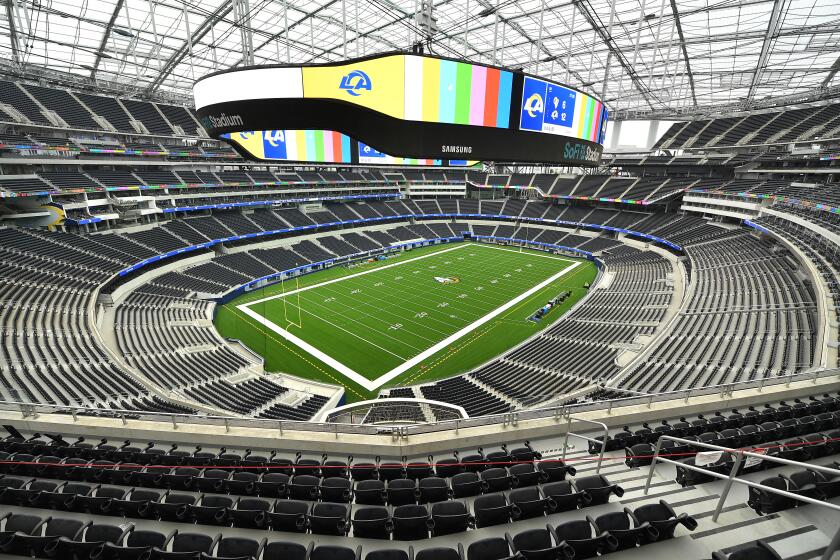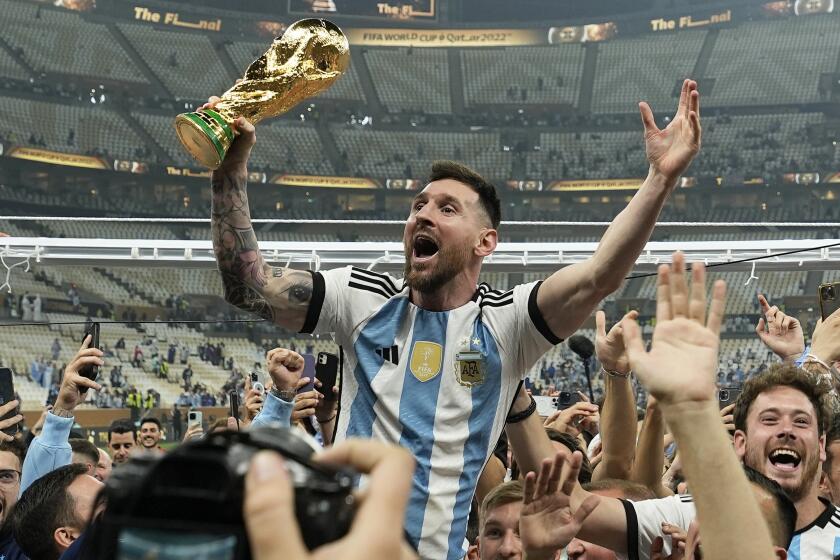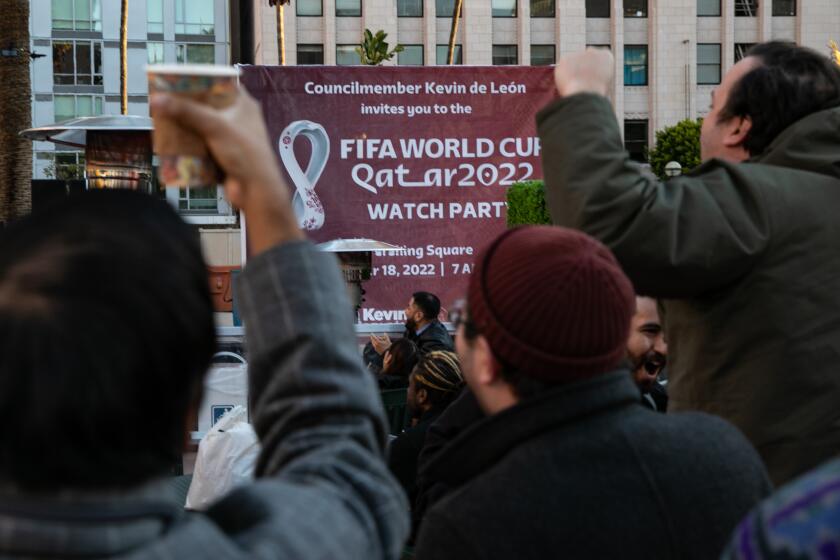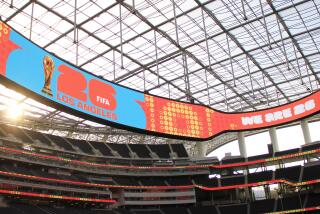What lessons can the 2026 World Cup in North America learn from 2022?
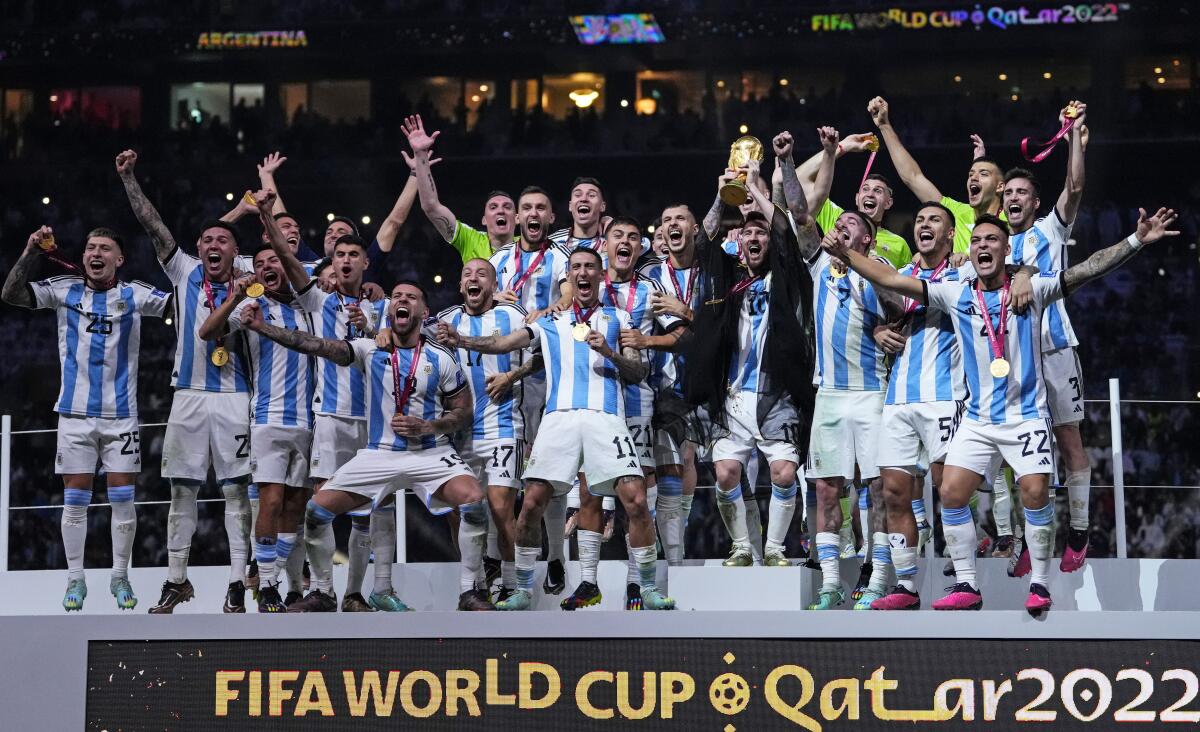
- Share via
AL RAYYAN, Qatar — Sunday’s World Cup final, which ended with Lionel Messi finally grasping the one trophy he had never won, was the most dramatic in tournament history. It was great theater, a bare-knuckle brawl that played out over 120 minutes and four rounds of penalty kicks before Argentina was declared the victor after a game that ended in a 3-3 draw.
Which raises one very vexing question: What to do for an encore?
The next World Cup kicks off in North America in 3½ years and will be the largest and most complex ever, with a record 48 teams playing 80 games in 16 cities spread across the United States, Canada and Mexico. It’s not so much a soccer tournament as it is a full-scale invasion.
U.S. Soccer President Cindy Parlow Cone will be one of those trying to ensure it goes off without a hitch, and she will start that work by looking at what went right and what went wrong over the last month in Qatar.
“I’m the type of person that I can learn from everyone. So I took that approach with Qatar, taking a look around and seeing how they’re doing it, comparing it to how I think things may work in the U.S.,” said Cone, who spent 2½ weeks in Qatar during the World Cup. “What could we do better? What things are they doing that we can maybe kind of adopt in the U.S.?
“There were a lot of things that we can take notice of and hopefully make 2026 the biggest and best World Cup.”
SoFi Stadium in Inglewood is among the 16 venues selected to host matches during the 2026 FIFA World Cup.
Preparations for the 2026 World Cup began before Messi set down the World Cup trophy after Sunday’s victory celebration. But it’s the differences more than the similarities that stand out when comparing the 2022 World Cup with the 2026 tournament. In Qatar, the 64 games were played in and around Doha, a city of 2.3 million people, and all eight stadiums were located within a 21-mile radius of the city center. In 2026, the tournament will be spread across four time zones with stadiums separated by as many as 3,500 miles, from the altitude of Mexico City and the humidity of Miami to cosmopolitan Toronto and homespun Kansas City, Mo.
There are also different laws. Qatar strictly regulates the sale of alcohol, while the United States, Canada and Mexico pretty much encourage it. Qatar had to build seven of the eight stadiums and its Metro system from scratch and spent billions more to upgrade its international airport. All of the stadiums and much of the infrastructure for 2026 are already in place.
“Not everything can transfer, right?” Cone said. “What works in one country may not work in another country.”
There’s also the tournament expansion. The last time the men’s World Cup was played in the United States, in 1994, there were just 24 teams. This time, the field will be double that size — so big that even FIFA President Gianni Infantino acknowledges he’s not sure how best to organize the tournament. Should it begin with 12 four-team groups or 16 three-team groups? Both scenarios have their pluses and minuses from a competitive standpoint, but Infantino quickly brought the conversation back to FIFA’s favorite subject: money.
“Three huge countries, 48 teams. More games, revenues will go up in terms of broadcasting, in terms of sponsorship, hospitality,” he said. “We will play in huge stadiums used for American football, [80,000] to 90,000 capacity. We are expecting 5.5 million fans traveling for these events.”
Lionel Messi found redemption, leading Argentina to its first World Cup victory in 36 years during a Qatar tournament that often stepped into controversy.
Which brings us to the most significant issue for both the three-country host committee and the 16 World Cup cities. FIFA has wrested control of much of the marketing and organization of the event away from its local partners, meaning FIFA will reap most of the profits while leaving the costs to local organizers. As a result, no World Cup will ever again produce the kind of domestic surplus the 1994 U.S. World Cup did, said Alan Rothenberg, a former U.S. Soccer president who organized that tournament, still the most successful in history.
“Before, FIFA kept the TV rights and the international marketing rights and turned everything else over to us. We at least were able to get our share of local television and a handful of categories domestically for sponsorships. And then also participate in the ticket revenue,” Rothenberg said.
As a result, the 1994 tournament, still the best-attended World Cup ever, produced a surplus of about $50 million, more than double original projections. That funded the creation of the U.S. Soccer Foundation and helped grow the game at the grassroots level. Major League Soccer was also born in the wake of that tournament, with Rothenberg overseeing its creation.
“It’s totally different from ‘94, that’s for sure,” said Rothenberg, now chairman of the sports marketing agency Playfly Premier Partnerships and an advisor to six 2026 host cities. “[FIFA] decided to bring things in house rather than just licensing third parties to do things. They’re running the show. The host cities are going to have the responsibility to operate the event and provide all the public services, and [FIFA is] providing very limited revenue opportunities for the host cities. So the host cities are scrambling to either find donations or public money or some creative ways to earn revenue.”
Beleaguered Los Angeles City Councilmember Kevin de León didn’t attend his own World Cup party. He still came out a winner
The new model will likely narrow the list of countries able to bid on future World Cups to wealthy nations such as the United States or authoritarian ones such as Russia, China and Saudi Arabia, Rothenberg said. But it also makes it harder for the tournament to produce the kind of impact and legacy the 1994 tournament did.
Still, Cone believes if this next World Cup comes and goes and nothing changes, it will be a costly missed opportunity, regardless of the financial constraints. The tournament should, at the very least, fuel interest in the sport and participation at the grassroots level.
“There’s a lot to be done,” she said. “We’re looking at how can we use World Cup 2026 to grow participation, to grow our fandom. Not just in the host cities but in every city in every state. Because while I’m looking at the road to 2026, the tournament itself, my big focus is post-’26, when everyone packs their bags and goes home. What is the legacy of this World Cup and how are we changing the game? Have we made people reimagine our game and think about it in different ways?
“Our job is to really think about it and strategize and work with our members, work with our stakeholders and our partners, to make sure that we are maximizing the impact of the World Cup in ‘26 and beyond.”
If they can pull that off, it would be quite an encore.

